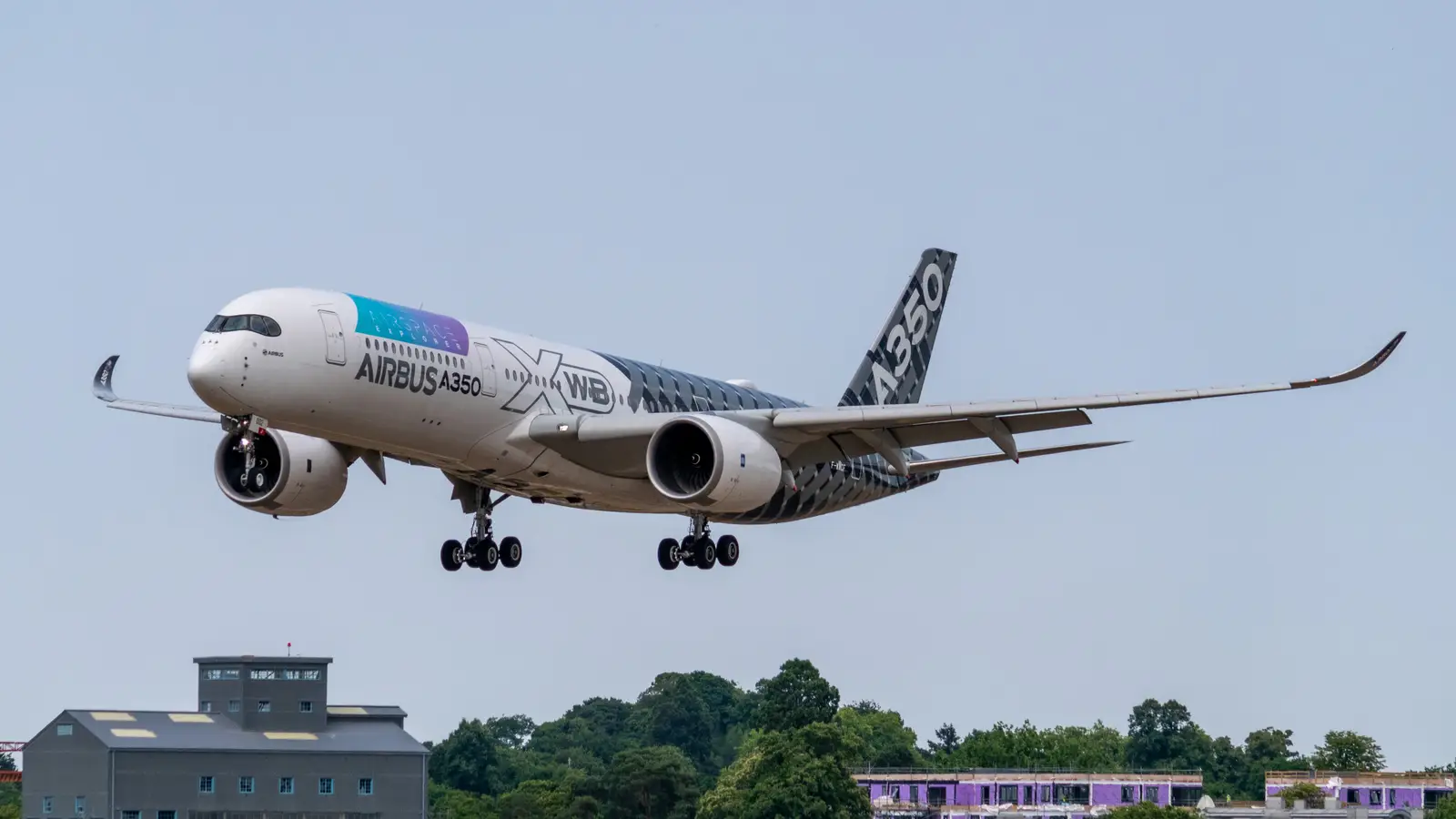Copyright Simple Flying

Over the years, the commercial aviation industry has changed significantly. In the early 20th century, commercial air travel was utilized only by the wealthy as a niche mode of travel. However, as the decades passed, the commercial aviation market has evolved into a global network that connects billions of passengers and thousands of tons of cargo. As jet engines and long-range aircraft were introduced, airlines became capable of linking continents and revolutionizing global transportation. Along with the deregulation of the airline industry, carriers could compete freely on routes and pricing. In recent decades, the commercial aviation market has been dominated by two manufacturers, Boeing and Airbus. Boeing has a long history of providing aircraft to global airlines, including the Boeing 707, which helped usher the market into the jet age, and the Boeing 747, which was the first widebody airliner introduced. Airbus, on the other hand, only entered the aircraft manufacturing market in the 1970s, although it eventually rose to prominence, developing aircraft for airlines around the world. Let's take a closer look at these two commercial aircraft manufacturers and how they compare against each other. Which Commercial Aircraft Manufacturer Is Dominating The Market? Together, Boeing and Airbus dominate the commercial aviation industry, and together the two companies account for roughly 80% of the active commercial aircraft fleet worldwide. Currently, over 30,000 aircraft make up the global commercial fleet. This means that Airbus and Boeing are responsible for over 24,000 total aircraft in the industry. Within the duopoly of Boeing and Airbus, the latter company has been pulling ahead in recent years. Over the past several years, Airbus has delivered more aircraft than Boeing, and its order backlog has grown accordingly. For example, in 2024, Airbus secured a total of 878 gross orders, while Boeing only secured 569 aircraft orders. Additionally, Airbus delivered 766 commercial aircraft in 2024, while Boeing only delivered 348 commercial planes. Airbus' narrowbody offering, the Airbus A320 series, has become a global workhorse. The company has been aggressive in ramping up its output of this aircraft family. On the other hand, Boeing's own narrowbody offering, the Boeing 737 series, has been hampered by production bottlenecks and quality-control disruptions. However, Boeing has continued to retain a global presence around the world. The company has a large customer base, primarily in North America, although it also has a global foothold in the widebody market. Although Boeing remains a formidable global manufacturer, Airbus currently holds the momentum in the industry, specifically as it delivers more planes and secures more aircraft orders. How Did Boeing Become Such A Dominant Force In The Commercial Aviation Industry? Boeing was originally founded in 1916 in Seattle, Washington. However, by the mid-20th century, Boeing had evolved from a small seaplane manufacturer to a leader in the commercial market. In the 1950s, Boeing found itself at the forefront of the jet age, specifically developing the Boeing 707. This aircraft, which was introduced in 1958, revolutionized the commercial industry and helped usher in the jet age of travel. The company continued to expand throughout the 1960s and 1970s. In 1967, Boeing introduced the Boeing 737, the world's best-selling aircraft, which was utilized by airlines around the world due to its efficiency and reliability. In the late 1960s, Boeing also introduced the Boeing 747, which was the world's first widebody. The 747 revolutionized long-haul travel and helped airlines connect continents on an unprecedented scale. By the time the 21st century rolled around, Boeing had also acquired McDonnell Douglas, another large commercial aircraft manufacturer. This helped to expand Boeing's global footprint and solidified the company at the forefront of the world's most powerful aviation companies. While the company has experienced several setbacks in recent years, including the 737 MAX crisis and increased competition from Airbus, Boeing's legacy of innovation and its existing fleet help solidify the company as one of the world's largest aircraft manufacturers. What Aircraft Does Boeing Produce In 2025? Boeing produces a wide variety of aircraft to cover a majority of the commercial market. The company's most popular aircraft is the Boeing 737. The latest series in this aircraft family is the 737 MAX, although many of the 737 Next Generation (NG) aircraft are still in service. Overall, over 12,000 total aircraft have been produced in this series since it was introduced in the late 1960s. According to ch-aviation, the largest operators of the Boeing 737 are: Boeing's widebody lineup remains a cornerstone of the company's strategy. The company recently phased out commercial production of the Boeing 767. However, this aircraft remains in limited production for freighter and military tanker use, as several orders by major cargo carriers are still active, including FedEx and UPS. The Boeing 787 is the company's most technologically advanced widebody aircraft, which was first introduced in the 2010s. These aircraft have become increasingly popular among airlines that are targeting medium to large capacity over long-haul routes. The company also currently produces the Boeing 777 series, one of the most versatile widebody aircraft in operation. However, the company has begun winding down production of the most recent series, including the 777-200LR and the 777-300ER, as it prepares for the next generation in the family, the 777X. How Did Airbus Become Such A Dominant Force In The Commercial Aviation Industry? Airbus was originally formed in 1970 as a European consortium of aerospace manufacturers. The company was initially created to challenge the overwhelming dominance of American companies, like Boeing, McDonnell Douglas, and Lockheed, in the commercial aviation market. Airbus was backed by France, Germany, the UK, and Spain, bringing Europe's engineering talent to compete on a global scale. The company's first aircraft, the Airbus A300, was introduced in 1972 as the world's first twin-engine widebody aircraft. Though initial sales of the aircraft from the unproven manufacturer were slow, the A300 eventually gained traction due to its lower operating costs than larger quad-engine widebody aircraft. By the 1980s and 1990s, Airbus became a credible global competitor. In the late 1980s, Airbus introduced the A320, the first commercial aircraft that utilized fly-by-wire flight controls. This aircraft has developed into one of the most successful aircraft lines in history, helping Airbus capture significant market share from Boeing in the narrowbody market. In the 21st century, Airbus has continued to innovate in the commercial market, including the introduction of the A380 and the A350 XWB. The Airbus A380 faced mixed success, while the A350 has become a global favorite for carriers. Overall, Airbus has continued to position itself as a market leader in recent years, especially as it delivers more aircraft and secures more orders than its rival Boeing. What Aircraft Does Airbus Produce In 2025? In 2025, Airbus produces several different product families to support various global programs. The smallest aircraft it produces, the Airbus A220, was developed in coordination with Bombardier as the CSeries. This aircraft seats passengers in a five-abreast configuration, typically holding up to 150 passengers. This is a unique aircraft offering, as it fits directly in between the narrowbody and regional airliner markets. According to ch-aviation, the largest operators of this aircraft include: In the narrowbody segment, Airbus produces the A320 series. This single-aisle workhorse is used by airlines around the world, becoming the best-selling airliner of all time. Since the first aircraft was introduced in April 1988 by Air France, Airbus has produced over 12,000 total aircraft. This family includes several different variants: the A318, A319, A320, and A321. The latest aircraft in the family is the Airbus A321XLR, which is capable of long-haul flights. In the widebody market, Airbus produces the A330neo and the A350 series. The Airbus A330 was originally introduced in the 1990s, but Airbus has since introduced variants with new engine options. The Airbus A350 was introduced in the early 2000s, developed to compete with the Boeing 787 Dreamliner. Since its introduction, the A350 has seen global success, with nearly 700 produced. Which Commercial Aircraft Manufacturer Has The Most Positive Outlook In 2025? Boeing and Airbus have secured their dominance in the commercial market in recent years. Boeing has displayed recent signs of recovery and latent potential. The company projects a demand for nearly 44,000 new aircraft through 2044, which is driven heavily by emerging markets. Boeing has also seen a rebound in 2025. In the second quarter this year, the company delivered 150 commercial aircraft, up from 92 a year ago. This projects its full-year deliveries to reach 584 aircraft, up about 68% from last year. The company also projects revenue to grow by about 30% in 2025. Meanwhile, Airbus has reaffirmed strong targets for 2025. The company is projecting about 820 commercial aircraft deliveries in 2025. The company also forecasts about 43,000 new commercial and freighter aircraft deliveries by 2044. While the company still faces supply-chain issues, its solid financial structure gives it a relatively robust outlook for 2025 and beyond. Overall, Airbus holds a stronger short-to-medium outlook for 2025 and beyond. The company has clearer targets, faces fewer program disruptions, and has stronger financial metrics. Boeing appears to have a compelling rebound story after recent production disruptions, and it also has strong long-term potential. However, in 2025, momentum in the commercial market is leaning toward Airbus.



